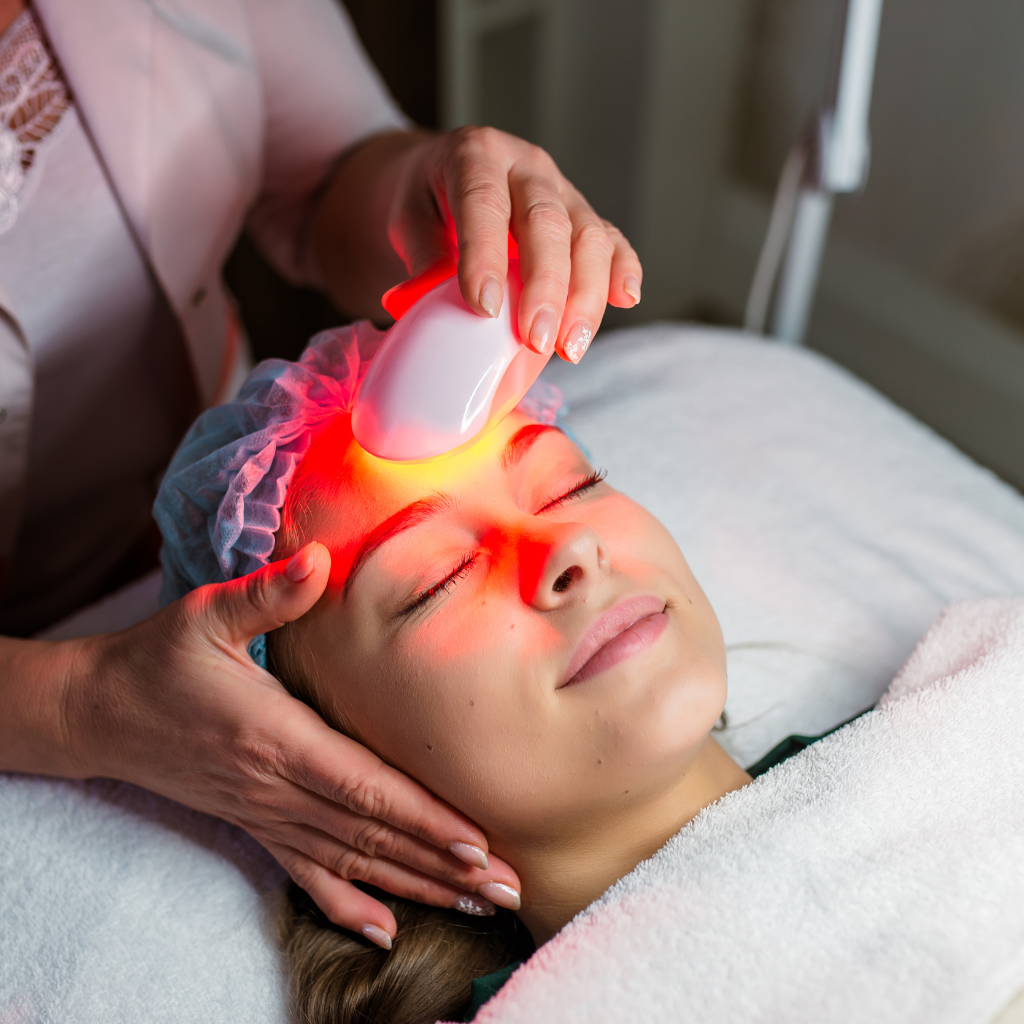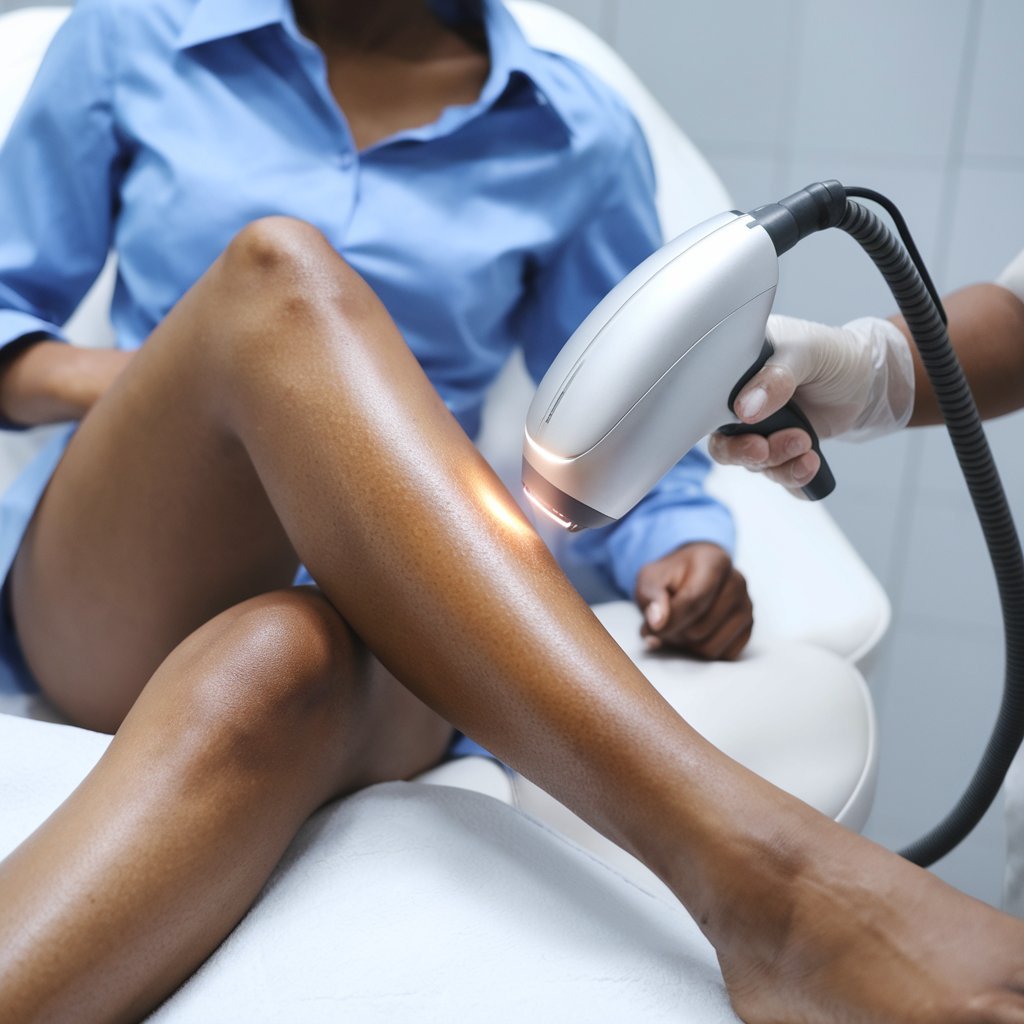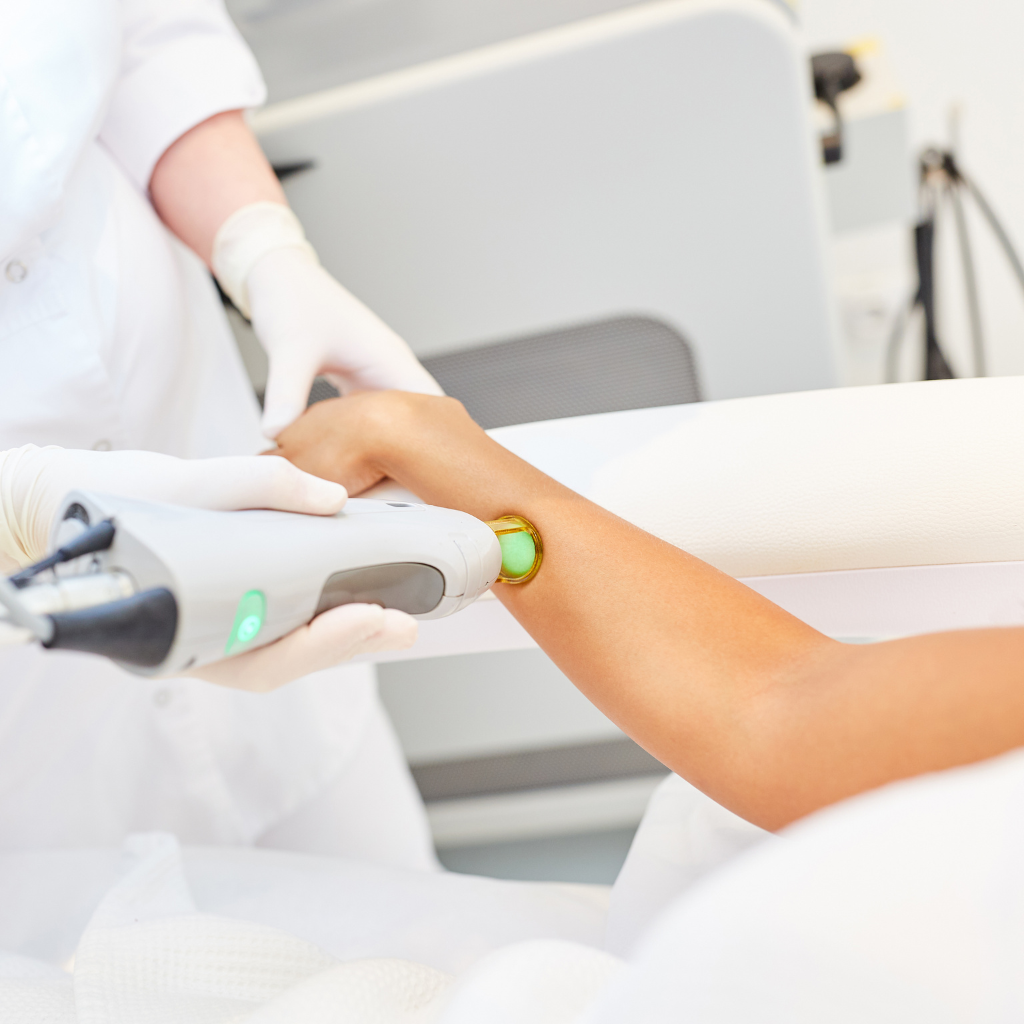Different Types Of Laser Hair Removal And How To Choose
- Home
- Laser Hair Removal
- types of laser hair removal

More and more people are turning to laser hair removal to save time and reduce hassles with constant shaving or waxing. Lasers help by focusing light on the hair follicles, which damages them so hair grows back more slowly. This method can be a game-changer, especially for those in humid and busy regions.
Understanding your skin and hair type is vital when considering permanent hair reduction. In India, our varied skin tones demand the right laser to avoid unwanted effects. Clinics now offer advanced laser types that deliver safer, faster, and more consistent results. The goal is to pick the technology best suited for your specific needs.
Understanding How Different Laser Treatment Targets Hair Follicles
Lasers work by sending concentrated beams of light into the hair shaft. That light turns into heat, which damages the follicle so it cannot regrow hair quickly. The principle behind this is called selective photothermolysis. It is selective because the beam tries to strike the melanin found in dark hairs rather than the surrounding skin.
Why Laser Types Matter For Hair Reduction
Not all laser types do the same job. Some reach deeper layers of skin, and others target shallower zones. The laser’s wavelength determines how well it interacts with the melanin in your hair and skin. People with very dark skin often need lasers that won’t disturb their natural colouring. On the other hand, someone with fair skin and thick, dark hair might do well with more common laser types.
Hair reduction calls for repeated sessions. Hair grows in cycles, so a single pass cannot catch every active follicle. Different laser machines operate at varied speeds and power settings. That is why a laser designed for large areas might not perform as gently on smaller, more delicate parts of the body. Dermatologists study these differences carefully before suggesting a specific system.
Evolving Laser Machines For Skin Tone
Early laser machines had limitations with darker skin tones, but today’s technology has transformed the experience. Modern devices feature advanced cooling systems, precise wavelength control, and adjustable pulse durations, making treatments more comfortable and effective for all skin tones. These innovations help ensure gentle, safe results while protecting the skin’s surface.
Many clinics now offer robotic or scanner-guided systems that track the section being treated. This reduces hot spots and protects the skin from overheating. Specialised cooling gels are sometimes applied, and these can ease discomfort further. When the correct settings are used, these modern laser treatment options achieve impressive results on various skin tones without excessive downtime — whether you’re seeking smoother legs, a clear face, or laser hair removal on your underarms.
Popular Laser Hair Removal Machine Options For Best Laser Results
Clinics in many regions stock specific laser hair removal machine models for hair reduction. Each device uses unique wavelengths and cooling techniques. Factors like speed, suitability for certain skin tones, and how they handle thicker or finer hair come into play. It helps to know which machines stand out and why they might suit you.

Diode Laser vs Ruby Laser: Which Type Of Laser Works Better?
The diode laser is widely praised for its versatility. It is typically set at 800 to 810 nm, making it more fitting for medium to darker Indian skin. It often includes specialised cooling tips and can handle thick hair well. Sessions might be faster, covering larger areas in less time if the clinic has advanced equipment.
The ruby laser is one of the oldest forms of laser hair removal technology. It targets dark hair but is best limited to those with very fair skin, because its 694 nm beam can easily irritate darker skin. Many clinics in India have moved away from the ruby laser for that reason, though it remains an option for lighter complexions aiming to remove fine hair.
Alexandrite Laser Hair Removal vs Nd:YAG: Choosing The Right Laser
Alexandrite laser hair removal operates at a 755 nm wavelength. It is known for quick coverage, especially on larger areas. It also tends to be strong on fairer skin that has dark hair. However, with darker skin tones, settings must be cautious to prevent burning. This type works great on delicate areas and can pick up fine hair patterns.
The Nd: YAG laser typically runs at 1064 nm, which can penetrate deeper without affecting the skin surface too harshly. It is safer for individuals with darker skin. Nd: YAG usually requires more treatment sessions, but that trade-off is valuable if you want to minimise post-laser markings. Picking the right laser blend often depends on your dermatologist’s evaluation of your skin colour and hair texture.
Consider When Choosing A Laser Hair Removal: Key Factors
People often ask how to decide which laser machines or methods suit them best. Specialists usually suggest looking at your skin tone, hair thickness, budget, and how many sessions you can manage. Another significant point is pain tolerance. Some devices come with built-in cooling technology, while others rely on topical numbing gels.
Assessing Skin Tone And Hair Type
At Tune Clinical Aesthetic, specialists carefully assess your skin tone and type to select a safe and effective laser for your treatment. This personalised approach ensures comfort while achieving the best results for your skin.
Hair type also affects outcomes. Thicker hair responds well and may benefit from slightly longer or repeated passes for lasting smoothness. Finer hair may need more precise targeting. The greater the contrast between skin and hair colour, the easier it is for the laser to focus on pigment while protecting surrounding skin. A patch test at Tune Clinical Aesthetic ensures your skin responds well and helps tailor your treatment plan perfectly.

Session Counts With Different Laser Machines
Each laser treatment provides a slightly different sensation. Some feel like a gentle snap, while others produce a deeper warmth. At Tune Clinical Aesthetic, advanced cooling systems and bursts of air help keep each session comfortable. Many patients find the experience more tolerable than waxing, and multiple sessions help achieve long-lasting smoothness. Here’s a quick overview for reference:
| Laser Machine | Typical Sessions | Comfort Level |
|---|---|---|
| Diode Laser | 6 to 8 | Moderate with cooling tips |
| Alexandrite Laser | 4 to 6 | Fairly gentle, faster coverage |
| Nd:YAG Laser | 8 to 10 | Can be slightly more intense |
Budget And Realistic Expectations
Laser hair removal is an investment. Prices vary by city, clinic reputation, and the device used. Some places bundle packages. A cheaper system costs less per session but needs many more visits. Set realistic expectations. Permanent facial hair removal is not usually achieved in a single series, and maintenance visits might be necessary in the future.
Best Practices To Use Laser Machines For Hair Removal In India
Getting smooth results with lasers for hair removal takes the right prep and a proper aftercare routine. Heat, humidity, and constant sun can be factors in many regions. That is why timing, sun protection, and a bit of caution around certain products can help you avoid complications and see more progress.
Pre-Treatment Care And Post-Treatment Tips
Before going in for laser sessions, it is wise to avoid tanning or heavy sunbathing. You should also stop other hair removal methods that remove hair from the root, like waxing, for a couple of weeks. Shaving is all right because it only removes hair on the surface without disturbing the follicle.
Immediately after a session, the treated area may feel slightly warm or appear pinkish. Apply cool compresses or soothing gels like aloe vera. Stick to gentle skincare products. Avoid saunas and hot baths for a day or two. Skipping harsh scrubs is also advised. Protecting your skin from direct sunlight.
Long-Term Maintenance And Myths
Results will vary, but many experience a significant reduction in hair growth after several sessions. Maintenance appointments can help manage any regrowth. Some mistakenly think laser hair removal sets off cancer or that it is safe to do just one session to stop hair entirely. In truth, these ideas are not correct. The laser lights used are not ionising and do not cause DNA damage.
Repeated treatments are needed because of the hair’s growth cycle. Some follicles rest while others are active. Regular lasers for hair removal handle active follicles, but resting ones might grow hair later. That is normal. With proper care, you are likely to see a substantial decrease in unwanted hair over time, no matter which laser machine you select.
Wrapping It Up: Making An Informed Choice
Choosing the proper laser treatment depends on your skin tone, hair colour, comfort level, and schedule. At Tune Clinical Aesthetic, specialists assess your unique skin and hair combination to select the safest and most effective technology for you. Personalised guidance helps ensure smooth, lasting results while maximising comfort.
If you’re unsure where to start, book a consultation. Our team explains session requirements, provides realistic timelines, and shares expert tips for at-home care. Flexible payment options make it easier to plan your treatment. With the right approach, laser hair removal is a valuable investment in both convenience and confidence.

Highly skilled cosmetologist at Tune Clinical Aesthetics, specializing in advanced skin and hair treatments.





